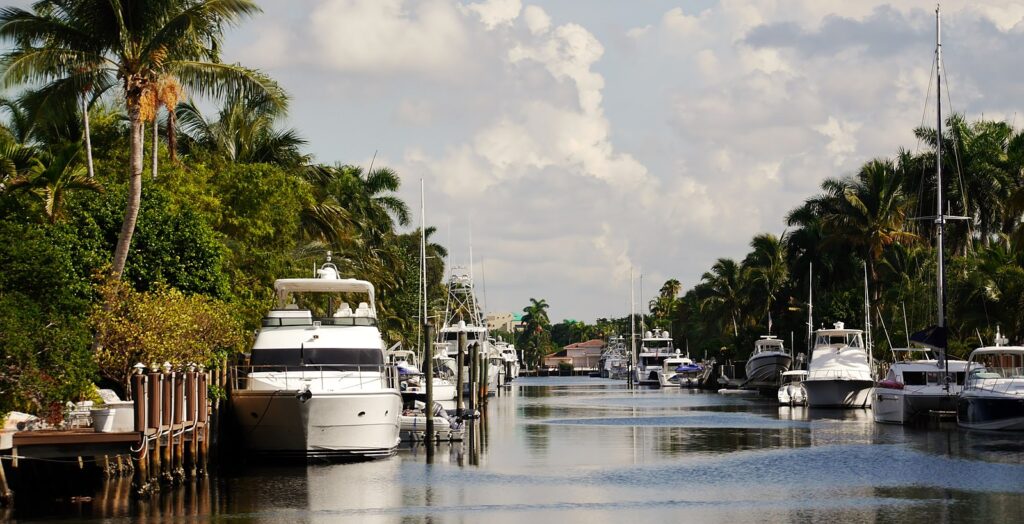The Most Challenging Waterway on the East Coast
Posted
Last Updated
By Capt. Bill Kinney, Special to Waterway Guide
Many different bodies of water could be in the running for this dubious prize, and I am sure no matter which ones were nominated the arguments could continue for days. My vote is for the New River in Fort Lauderdale, FL that runs from the Atlantic Intracoastal Waterway (AICW) inland through downtown Fort Lauderdale. It is not the geography that is the biggest problem, but man-made challenges. The waterway is narrow, and very crowded, frequeThe ntly with large vessels transiting.
The river is the only access to a large number of marinas and boatyards, many of them specializing in large yachts. This is both the primary reason for transiting this river, and also the reason it can be so challenging. How do you deal with a 180-foot super yacht coming at you around a blind turn when she has a following current, can’t stop, and can hardly steer? A classic case of “good news/bad news” is that most of the large boats moving on this river are piloted by professionals who are familiar with the area. The good news is that they are unlikely to do something foolish and are quite considerate of other boats around them. The bad news for newcomers to the river is that they have their own shorthand and “secret codes” when communicating with each other. Mysterious and confusing to the uninitiated, indeed. But once you know what they are talking about it gets easier.
A few observations:
- There will be times you will need to wait for other boats, or for bridges. You MUST be able to hold station with your boat in a current—maybe pointed forward or maybe astern.
- If you have a longer boat, a bow lookout is helpful in giving advance notice about what might be lurking around any of several blind corners.
- You will be using the radio to communicate with other boats and bridge tenders. Polite and concise conversation is appreciated by everyone.
- If you are new to this, it might be a good idea to have someone other than the person manning the helm working the radio. In an ideal world, there would be one person running the radio, one steering, the Skipper coordinating everything, and a lookout on the bow.
- You and your crew need to be aware that this transit will require close concentration and the full attention of the person on the helm. This is one place where small talk and commentary on the passing scenery are probably best saved until later.
- It will be much better overall if you plan your trip to go against the tide. This makes holding station while waiting for traffic or other boats much easier.
- Many of the largest vessels will be transiting the river under tow, with small tugs front and back.
READ more at https://www.waterwayguide.com/knowledge-center/news-post/11911/the-most-challenging-waterway-on-the-east-coast

